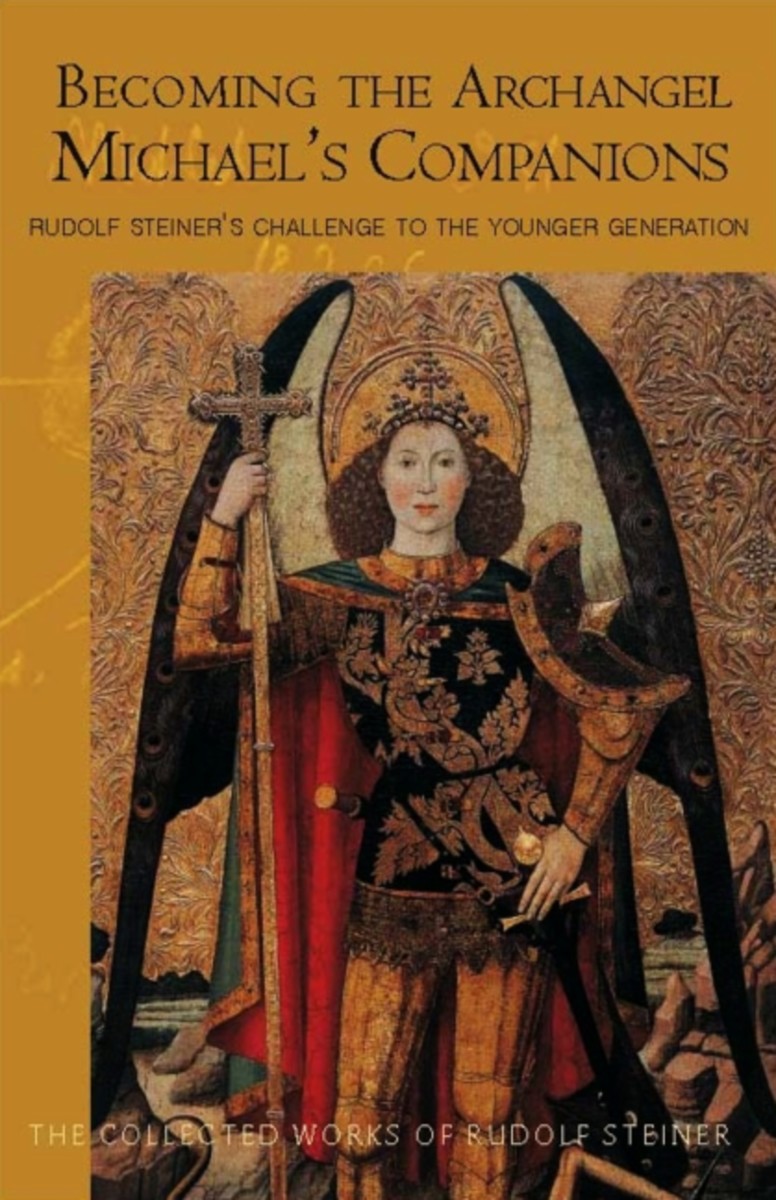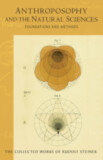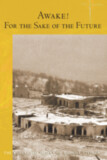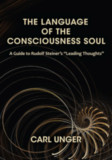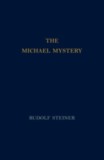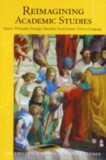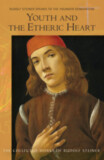Becoming the Archangel Michael's Companions
Rudolf Steiner's Challenge to the Younger Generation (CW 217)
Introduction by Christopher Bamford
Translated by René M. Querido
Preface by Carlo Pietzner
- Publisher
SteinerBooks - Published
1st December 2006 - ISBN 9780880106092
- Language English
- Pages 240 pp.
13 lectures, Stuttgart, October 3–15, 1922 (CW 217)
“This cycle of lectures 'to the younger generation' speaks of a pathway to a Michaelic harvest for ears that have the goodwill to hear.” —Carlo Pietzner
Rudolf Steiner presented these lectures to about a hundred German young people who hoped to bring Waldorf education into the culture of their time and for the future. Steiner stressed upon his listeners the great importance of "self-education" as a prerequisite to all other education. His was an attempt to guide the youth toward understanding themselves within the world situation.
Steiner showed how the stream of generations had been interrupted by eighteenth-century intellectualism, emphasizing that they would have to reject the general acceptance of impersonal social routine, dead intellectual thinking, and personal and social egoism. Steiner discussed the need, instead, for a form of education permeated by art and feeling, which brings inner nourishment that can grow throughout one's life. It was his view that, without such an education, society will not reach a future built on moral love and mutual human confidence—a truly human culture.
A previous edition of these lectures was published as The Younger Generation: Educational and Spiritual Impulses for LIfe in the Twentieth Century (1967). Original German title: Geistige Wirkenskräfte im Zusammenleben von alter und junger Generation. Pädagogischer Jugendkurs (GA 217).
This Collected Works edition includes a new introduction, notes, and an index.
C O N T E N T S:
Introduction by Christopher Bamford
Preface by Carlo Pietzner
1. STUTTGART, OCTOBER 3, 1922
The gulf between the older and younger generation. The difference between the soul languages. The preservation of the Middle Ages in Western Europe; West European materialism in Central Europe. Goethe and Darwin. Sharpness of thought still to be found with the thinkers at the beginning of the nineteenth century; the advent of the empty phrase in spiritual life. Result: mindlessness, lack of feeling and will. Thoughts no longer have the strength to impel the will and the heart. A special difficulty exists for the scientist to enter into the needs of the time because in science heartless thinking is consciously striven for. Humanity deeply longs for heart-filled thoughts, which stream from the center of our true being. Giordano Bruno and Julius Robert Mayer as victims of their time. The end of the nineteenth century, a turning point in the inner development of humanity.
2. STUTTGART, OCTOBER 4, 1922
The search by college students for guiding teachers. The universities as research institutions. The inhumanity of “objective science” before which “Philo-Sophia” has to creep away. The task of education: to give people the chance to grow old in a natural way. Until the fifteenth century, the human being was supported by inherited soul qualities; since the end of the nine-teenth century the soul stands before nothingness, because the human being has lost the connection with the spiritual world. Waldorf pedagogy is not a pedagogical system, but an art for awakening what is hidden in the human being. With the intellect one dreams about the world. The Mystery of Golgotha cannot be grasped by the intellect. There is a striving within the soul to understand the Mystery of Golgotha. The spiritual world must be experienced with new forces, since all the old, inherited ones are used up. The striving for community by the youth is deeply grounded in this impulse. Youth demands to be awakened in its consciousness. The question therefore is: how do we find the spirit in ourselves?
3. STUTTGART, OCTOBER 5, 1922
The person of today considers only the waking consciousness between waking up and going to sleep, whereas in former times something from one’s sleeping consciousness was carried over into the day. When salt, mercury, phosphorus, etc., were spoken of, one still had an etheric perception of these things. Since the fifteenth century the sleeping consciousness trickles into waking consciousness less and less. The development of culture from the educational point of view. Formerly a book stimulated productive forces in the human being; today everything is taken in formally, logically and inactively. Today’s thinking is a product of the brain; to that extent materialism is correct. But it is a dead thinking, which must be distinguished from one that is alive. The results obtained by external observation with dead thinking cannot be taken into sleep. In sleep the human being of today is almost completely absorbed by the spirituality of nature, whereas previously the human being “was something” even in sleep. It does not depend on the words: one can even represent Theosophy in a materialistic way. Spirit is not to be spoken about, but in speaking, spirit is to be generated. Schematic Anthroposophy is spiritless. The Benedictine Father Mager about Anthroposophy. Only out of an inner penetration of the spirit can we re-enliven the culture of the present time.
4. STUTTGART, OCTOBER 6, 1922
The philosophers as “thermometers” of the spiritual condition of their time. Spencer’s Principle of Ethics in which it is proven that ethical distinctions cannot be based on moral intuitions, feelings, etc., but that ethics can only be a matter of what applies in practice to the particular situation in society. In contrast to this, Intuitive Thinking as a Spiritual Path presents the view that anything else besides the immediate moral intuitions revealed in the human soul can no longer be considered authoritative, since now for several decades the human soul has confronted “the nothingness” as regards the spirit. Nietzsche’s path: philology, Schopenhauer, Wagner. Nietzsche against the Socratic method. His rejection of the ideals of his time, because he recognized they had turned into empty phrases. Nietzsche and Paul Rée, who apply the natural scientific discoveries of the time to morality. This led Nietzsche to the ideas of the super human and of the eternal recurrence of the same. Youth today seek for the living spirit, which, however, is not to be found in the intellectual sphere. The Youth Movement’s tendency to use clichés, or empty phrases. The need to develop a feeling for the truth. Empty phrases, convention and routine must be overcome through truth, a direct relationship between human beings and through a spiritual element in everyday activities.
5. STUTTGART, OCTOBER 7, 1922
Formerly, moral intuitions were given to groups of people, now the individual has to achieve them. The primal revelation has dried up; passive forces can no longer bring about a real connection with the spirit. Observing, experimenting, and thinking do not require inner activity. Only in active thinking does thinking enter into the will; out of this arises productive moral imagination. Intellectual thinking stands in relation to living thinking like a corpse to the living human being. Therefore, the actual object of knowledge is what is dead. In this way science can be carried on, but not the education of youth. The intellectualism handed down to them by the older generation is like a stake in their flesh. The moral intuitions in Intuitive Thinking as a Spiritual Path are the beginning of the living thinking that can once again grasp the spirit. We have to learn to carry self-active living wisdom, which worked in us before birth and in our childhood, into the died-out thinking. In this sense the words in the Bible, “lest you become as little children...” are relevant today. The Youth Movement should have the aim that childhood, that is to say, the spirit, is carried over into the later years. As a final consequence a spiritual science arises in which anthropology becomes Anthroposophy.
6. STUTTGART, OCTOBER 8, 1922
Comprehending the basic character of our time pedagogically. A new attitude is necessary towards the younger generation, one that arises from a consciousness of the pre-earthly existence of the soul. The solution to the world’s riddle is in the words “Human Being, know thou thyself.” The world is the question, and the human being the answer. The necessary transformation of the old moral impulses: moral love within and mutual trust on the outside. Kantian concept of duty and ethical individualism. The joy of trust and the pain of mistrust towards others will infinitely increase in the future. Knowledge of the human being must become the basic principle of pedagogy in the future. Through moral intuitions that have been worked for, rather than God-given, all of life will once more be imbued with a religious impulse. While we meet other people with human trust, we must stand before children with trust in God. Thus, the moral element will again become a religious one. The Youth Movement must have a Janus-head, the two-faced Roman god, which on the one hand looks at youth’s own demands on their elders, on the other hand at the demands that coming generations will make on those who are now young. The Youth Movement cannot be only oppositional, but must creatively look ahead.
7. STUTTGART, OCTOBER 9, 1922
The fatigue of the youth. Young people no longer become tired in the right way. Science of today does not require any inner participation. Reading the writings of a mediaeval thinker requires the greatest soul effort. The split of today’s seeker of knowledge into that of scientist and of human being, both strictly separated. In every child is a hidden human being who rejects what a teacher reads from a book. Where did people direct the soul forces that were not addressed? The young ones became enraged (Youth Movement), the older ones looked for a sedative in Theosophy, as it was then often practiced. The longing for something new can only be satisfied by spiritual science. The four ways to knowledge in the old Brahman schools. Today’s way: trusting that what is communicated by another person can become the source of one’s own soul-spiritual experience.
8. STUTTGART, OCTOBER 10, 1922
The historical development of humanity from revealed to self-generated thoughts. We only have an external history, no history of feeling, thought, or the soul. The year 333. Nominalism and Realism. The tragedy of the Middle Ages: the vanishing connection between human thoughts and the spiritual world. In recent times picking up thoughts from the outer sense world has replaced inner thought formation. Kepler as representative of two worlds. The last echoes of a feeling for the divine-spiritual nature of thinking were lost in the nineteenth century (Henle, Burdach, Hyrtl). The appearance of psychology without soul. The connection between what is microscopic and macrocosmic development became a perceptual problem for many people of depth. Professor Fortlage. Anthroposophical literature requires active thinking in which the heart also participates, not only the head. Through the activity of the will brought into thinking we recapture the divine nature of thinking.
9. STUTTGART, OCTOBER 11, 1922
The bridge connecting human beings is missing. Young people want to judge everything. This is only possible with the intellect. Life situations can only be judged with active thinking, which cannot be acquired before the eighteenth year. Formerly education did not depend on knowledge confirmed by diplomas, but on ability. The teacher earned authority by giving proof of ability. Grammar, rhetoric, dialectic, and instruction in the arts. Today all education must be imbued with an artistic element. Truth can be captured only through beauty. The human being cannot be understood intellectually. Concepts appropriate for outer nature are adequate only for the physical body. Even the lowest supersensible member, the etheric body, can be understood only out of an artistic soul experience. A genuine youth movement will not be an opposition, but a movement that is drawn towards the teachers. This can happen when, from the side of the older generation, the youth are met with truth in the form of beauty. Then, not the passive intellect, but the active will is addressed.
10. STUTTGART, OCTOBER 12, 1922
With regard to the intellect, the maturity of a person plays no part. Concepts can be discussed by anyone with anyone else. The history of the soul development of humanity and of the individual. Rhythmical progression. Examples from Goethe’s life. Thousands of years ago these rhythms and sudden changes were experienced just as strongly throughout life as they now are only in childhood (change of teeth, adolescence, etc.) Older people experienced the withering of the body and the freeing of the soul (Patriarchs). People have increasingly lost consciousness of this, and it must be regained. The spiritual element that formerly sprouted forth naturally with age must now be acquired through inner effort. Advances in intellectualism will only be experienced through practice, but no longer as a deepening. Spiritual science requires soul cooperation. Pure thinking, in the sense of Intuitive Thinking as a Spiritual Path, is at the same time pure willing. Through pure thinking a new inner person is born who can bring an unfolding of the will out of the spirit. This activity is identical with artistic activity. The pedagogue of today needs an artistic constitution in order to develop a new relationship between teacher and student. Through this the student can once more come in a natural way to look up to the teacher.
11. STUTTGART, OCTOBER 13, 1922
In the subconscious of the human being lives the need to experience the world not only with the head, but with the whole being. The modern individual has this capacity only until the change of teeth. The infant is entirely sense organ. One cannot educate human beings with abstract scientific content; education is possible only if one approaches them in an artistic way. The “philosophy of freedom” as a means to take hold of the human individuality. One cannot be an educator by knowing a lot, but by giving the student something as a human being. The essential thing between the change of teeth and adolescence is the soul configuration of the teacher. Praying and blessing in their causal relationship to each other. The child must get pictures capable of growth, not abstract definitions, which would be like tying them up inside an apparatus. We must develop an art of education through which people learn to live with one another once more.
12. STUTTGART, OCTOBER 14, 1922
Only in our own time do individual “I”s confront one another unveiled. In the Indian cultural epoch sense perception also revealed the spiritual. The aim of the Mysteries: in a roundabout way via the soul-spiritual to make the sense-perceptible understandable by the soul of the human being. Persian epoch: perception of the human being as a light-form. Egypto-Chaldean epoch: the human being began to see the exterior with the senses and the interior soul-spiritually. Greek epoch: distinct separation of the bodily-corporeal and the soul-spiritual. Until the Greek epoch the “I” was still perceived through sheaths. Perception of the unsheathed “I” creates fear among humanity in more recent times (examples: Francis Bacon, Shakespeare, and Jean Paul). Anthroposophical pedagogy does not want to instruct but to characterize human beings. Actually, education should not be talked about. We can only educate with the mobile human forces that are active in us in childhood. The real pedagogue can be neither a philistine nor a pedant.
13. STUTTGART, OCTOBER 15, 1922
The transition from revealed concepts to those worked out from outer nature. The concepts dying out within have been re-enlivened by outer nature. The thinking derived from nature is not adequate for understanding the human being. With the development of natural science, anthropology has fallen into decline. The dragon devours the soul life of the human being. The dragon can therefore have a powerful effect, since the human being no longer comprehends its being. A belief that matter is preserved in the human organism is proof of the complete misunderstanding of what the human being is. In fact, matter is being continually destroyed and newly created in the human being. The dragon must be vanquished in that we recognize that Michael also comes from outside. Every science today is a metamorphosis of the dragon. The only remedy against the dragon: to penetrate oneself through and through with the true knowledge of the spiritual being of the world. By means of a living, artistically conducted education of the youth we will prepare the vehicle for Michael to enter into our civilization. This is the real, basic impulse of every educational doctrine. The spiritual is something alive that is not like the bones, but the blood. The vessels in which this blood runs are the young people growing up. Only when the child becomes our educator, in bringing messages down from the spiritual world, will the child also be prepared to receive the messages from adults about life on the Earth. This course was meant, above all, to speak to the hearts.
Editorial and Reference Notes
Rudolf Steiner’s Collected Works
Significant Events in the Life of Rudolf Steiner
Index
Rudolf Steiner
Rudolf Steiner (b. Rudolf Joseph Lorenz Steiner, 1861–1925) was born in the small village of Kraljevec, Austro-Hungarian Empire (now in Croatia), where he grew up. As a young man, he lived in Weimar and Berlin, where he became a well-published scientific, literary, and philosophical scholar, known especially for his work with Goethe’s scientific writings. At the beginning of the twentieth century, he began to develop his early philosophical principles into an approach to systematic research into psychological and spiritual phenomena. Formally beginning his spiritual teaching career under the auspices of the Theosophical Society, Steiner came to use the term Anthroposophy (and spiritual science) for his philosophy, spiritual research, and findings. The influence of Steiner’s multifaceted genius has led to innovative and holistic approaches in medicine, various therapies, philosophy, religious renewal, Waldorf education, education for special needs, threefold economics, biodynamic agriculture, Goethean science, architecture, and the arts of drama, speech, and eurythmy. In 1924, Rudolf Steiner founded the General Anthroposophical Society, which today has branches throughout the world. He died in Dornach, Switzerland.


